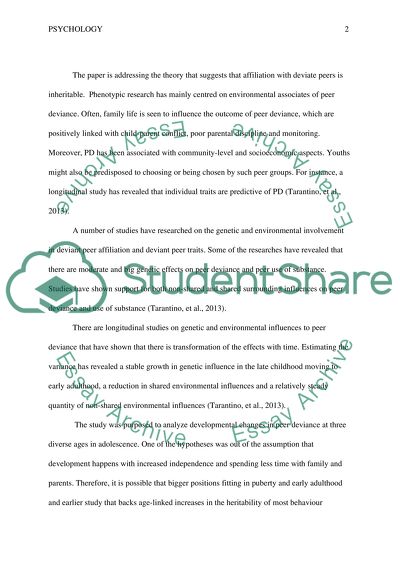Genetic and Environmental Influences on Affiliation With Deviant Peers Essay. Retrieved from https://studentshare.org/psychology/1631041-genetic-and-environmental-influences-on-affiliation-with-deviant-peers-during-adolescence-and-early-adulthood
Genetic and Environmental Influences on Affiliation With Deviant Peers Essay. https://studentshare.org/psychology/1631041-genetic-and-environmental-influences-on-affiliation-with-deviant-peers-during-adolescence-and-early-adulthood.


